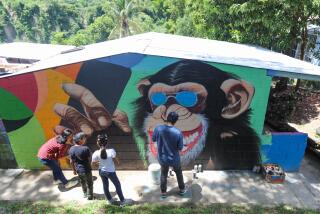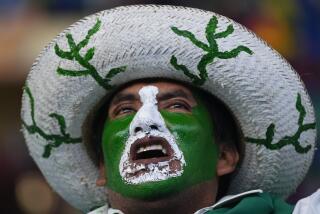To Address Inequality, Look Racism in the Face
- Share via
WASHINGTON — As much as any country in Latin America, Bolivia faithfully took the medicine of modernity advocated by Washington. After a century of mostly authoritarian rule punctuated by military coups, Bolivia embraced democracy, holding periodic free elections since 1982. It unflinchingly applied market economics, privatizing its industries, liberalizing its trade and disciplining its fiscal management. It enthusiastically enlisted in Washington’s anti-drug war and was lauded by U.S. officials for eradicating most of its coca crop.
The lives of ordinary Bolivians, however, haven’t gotten much better. In the last five years, economic growth has stalled and unemployment risen. Twenty years of democratic rule haven’t rid the political system of corruption or ideological confrontation. The accumulating political and social tensions recently exploded into a full-scale popular assault on Bolivia’s genuinely democratic president, Gonzalo Sanchez de Lozada.
There is no single explanation for why things have gone wrong in Bolivia. But one factor stands out: the country’s stark social and economic inequalities. Such inequalities become especially flammable when they mirror racial and ethnic divisions. Bolivia’s president was forced to resign last month by a majority Indian population that lives mostly in misery, excluded from power, opportunity and anything close to a fair share of national wealth.
These ingredients for political unrest are present in other Latin American countries. Three years ago, indigenous groups in Ecuador helped depose that nation’s elected leader. Now, less than a year after supporting the election of current Ecuadorean President Lucio Gutierrez, Indian leaders have become his most virulent opponents. In neighboring Peru, the large, poverty-stricken indigenous population is less mobilized and politically active. Still, Indian peasants were, overwhelmingly, the main victims of Peru’s recent war against the Shining Path guerrillas, according to an official commission investigating the war. Nowhere in Latin America is the native population more downtrodden and battered than in Guatemala. Many consider its 35-year civil war to have been a virtual genocide against its majority rural and Indian communities. A 7-year-old peace agreement has brought them little social or economic advance -- and no end to their exclusion from national life.
Latin America’s African-descendant communities are not as organized or confrontational as the indigenous groups, but they are demonstrating a growing militancy in countries such as Brazil, Colombia and Nicaragua. They are as poor as indigenous groups and face similar, if not worse, problems of discrimination and exclusion. In Brazil, the 80 million to 85 million Afro-Brazilians, nearly 50% of the population, earn about half of what whites do, on average, receive much less schooling and are the main victims of police violence. Brazil’s new president, Luiz Inacio Lula da Silva, has committed his administration to fighting racial inequality, names blacks to senior policy jobs and created a cabinet-level department to advance racial equality. But progress is slow.
Washington’s economic and political reform agenda isn’t wrong. It’s just too narrowly conceived. To work, it must address Latin America’s pernicious and pervasive inequality and racism.
With virtually every major multilateral and national aid agency worldwide participating, the United Nations has embarked on an ambitious international effort to attack global poverty. Rich and poor countries have pledged to meet a set of “millennium development goals,” in essence, a series of social targets for improving the lives of poor people through better access to education and health, greater gender equity and progress on other fronts.
Latin America -- being, on average, a middle-income region -- should have little difficulty in achieving most of the goals. But unless targets are explicitly set and pursued for African-descendant and indigenous populations, the well-intentioned and well-financed anti-poverty initiative may end up worsening Latin America’s notorious inequalities and aggravating its racial and ethnic divisions. The first challenge for Latin American governments and international aid agencies will be to obtain accurate information on the numbers and conditions of black and Indian groups. That such information doesn’t exist in most countries, and is barely reliable where it does, says mountains about the region’s long-standing neglect of race and ethnicity.
More to Read
Sign up for Essential California
The most important California stories and recommendations in your inbox every morning.
You may occasionally receive promotional content from the Los Angeles Times.










